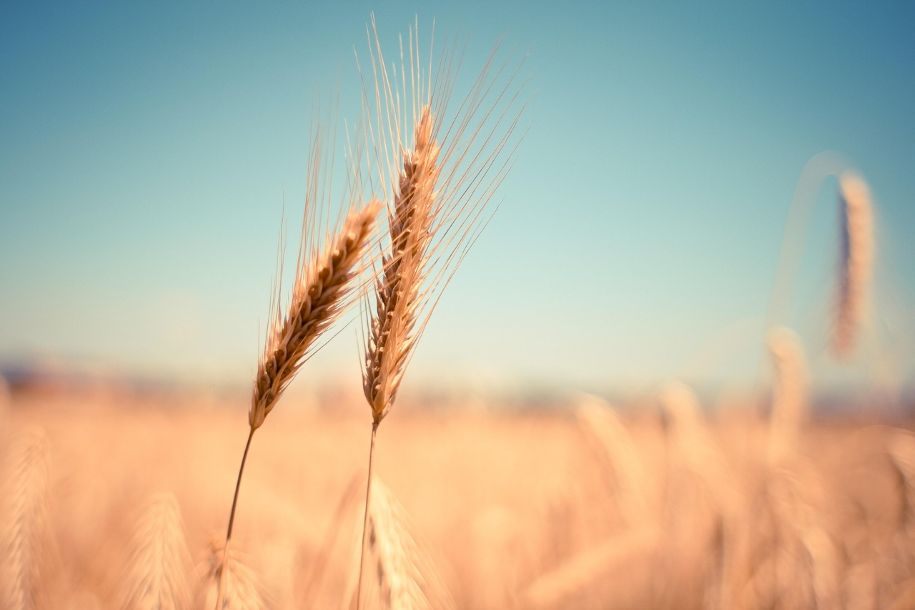
Celiac disease is an autoimmune disorder that damages the small intestine and can cause inflammation anywhere in the body. This is triggered by eating gluten, which is a protein found in wheat. According to Harvard Health, gluten has no nutritional value, and it has been stated by Johns Hopkins Medicine that no human has the enzyme to digest gluten fully. The enzyme that aids in digesting gluten is called protease. The average person passes gluten through their digestive system without any issues.
The Cleveland Clinic affirms that about 97% of people diagnosed with celiac disease have a recognizable gene mutation associated with it (HLA-DQ2 or HLA-DQ8), which is discovered through a blood test. These are genetic markers that are part of the immune system. An article in Bloomberg magazine explains that it is thought that celiac disease is on the rise due to the changes in the way wheat is processed and the widespread use of gluten in medications and packaged food. Some speculate that pesticides could also play a role in the condition.
Celiac disease affects non-Hispanic, white western Europeans the most frequently. Hispanics and African Americans are less likely to have the disease, according to the NIH. PR Newswire explains that black Americans are also less likely to have awareness about celiac disease due to health disparities. Some are not informed that it is hereditary and runs in families. Many do not know that avoiding gluten is beneficial and this can cause unnecessary suffering for those individuals.
Facts & Statistics
As celiac disease becomes more prevalent, there’s also an increase in resources. Some of the statistics vary slightly, depending on the source. There is some gray area as there is with many other health topics, but this still paints a picture of what celiac is all about and how it’s affecting people.
*1-100 people have celiac
*60-70% are undiagnosed (Celiac Disease Foundation)
*People with a 1st degree relative have 10% chance of developing celiac
*50% of celiac patients still report symptoms while on a gluten-free diet
*3 million people in the US have celiac
*Gluten sensitivity, wheat allergy, and celiac are different conditions
*A gluten-free diet is the only treatment for celiac patients
*There are 200-300 symptoms associated with celiac disease
*The gluten-free products market is worth $5.9 billion as of 2021 (Bloomberg)
*Occurs more in women than men (similar to other autoimmune disorders)
Complications
Celiac disease is a multi-system disorder that is linked to numerous illnesses that are listed below. When I saw miscarriage amongst them, it took me right back to 2007 and 2008 when I was trying to start a family. I had four consecutive miscarriages prior to having my oldest son. I thought for sure I was going to test positive for celiac, but that wasn’t the case. The miscarriage mystery will more than likely never be solved.
WebMD explains that uncontrolled celiac has been linked to miscarriage, preterm labor, low birth weight, and stillbirths. It’s believed that mothers don’t attain vitamins due to malabsorption and/or malnourishment. One study found that 85% of the women with celiac disease who miscarried had done so before it had been diagnosed. Miscarriages declined when gluten was removed from the diet and the disease was managed.
Cancer (small intestine)
Hashimoto’s
Type I Diabetes
Heart disease
Infertility & miscarriage
Low bone density
Malabsorption – vitamin deficiencies, failure to thrive
Skin conditions – eczema, dermatitis herpetiformis
Asthma
Osteoporosis
Microscopic colitis
Addison’s
Rheumatoid arthritis
Migraines
Anemia
Lactose Intolerance
Celiac has also been linked with Down syndrome. Beyond Celiac describes that 6% of Down syndrome patients have celiac disease compared to the general population of 1%. Behavioral changes are sometimes present as an atypical symptom for people with the chromosomal disorder.
Emotional Outlook
Nobody talks about the emotional strain that affects those with celiac. The disease has been known to cause anxiety for families. Eating out and deciding on meal choices can lead to frustration and there are often complaints about the lack of variety. Celiac causes bitterness especially in kids who just want to eat what everyone else is eating. The disappointment of not being able to participate in pizza parties or birthday celebrations with their peers is extremely challenging for kids and parents.
As I discussed in my eBook, Holistic Habits, grocery shopping and meal planning aren’t that difficult in general. If you stick to the perimeter of the store and focus on fruits, vegetables, meat, eggs, dairy, and nuts, meal planning will be simpler and naturally gluten-free. Processed food is where things get complicated, and concerns arise because of shared equipment and harvesting practices. Some people are more sensitive when it comes to shared equipment due to cross-contamination. When in doubt, eat real food and there won’t be any question. Simple, minimal ingredients or whole foods are the healthiest in the long run for everyone.
Keep breakfast simple with eggs, meat, potatoes, and fruit. Dinner can be straightforward with meat or fish, potato or rice, vegetables or fruit for the most part. Packing school lunches can be challenging, but leftover dinner works well most of the time. Gluten-free bread and buns can be a big hurdle. Sometimes you have to experiment with various brands and narrow it down. Finding gluten-free restaurants that have separate cooking areas are few and far between. Do your research and call ahead of time to see if the gluten-free food items are shared on the same grill and handled with the same utensils.
Luckily, more stores offer foods that support the celiac diet. Ten or twenty years ago, celiacs had a very hard time managing the disease because of limited options. Aldi, Costco, Trader Joe’s, and Whole Foods have great gluten-free selections, but your grocery budget will more than likely take a hit. Sometimes these foods are two to three times more expensive than non-gluten-free items. Here’s a list of options I always keep on hand.
My Favorite Pantry Staples
Grass-fed butter
Bone broth
Rice
Gluten-free flour
Rao’s sauce
Peanut butter
Eggs
Cheese
Fruit
Veggies
Meat
Nuts
Seeds
Certified oats
Grass-fed beef sticks
Gluten-free pasta
Avocado oil
Olive oil
Choc chips
Protein powder
Tortilla chips
Beans
Hummus
Yogurt
Cottage cheese
Milk
Applesauce
Gluten-free bread
GF breadcrumbs
Coconut aminos
Spices
Honey
There are apps that can assist with food labels and let you know if products contain gluten. One of the more popular tools is the GF Scanner. It works by scanning the product’s bar code with your cell phone. Remember that you can’t rely solely on these tools. They may not have the latest information on ingredients. Reading your labels regularly is still the best way to educate yourself.
Managing celiac disease requires strict adherence to a lifelong gluten-free diet to prevent symptoms and long-term complications. Early diagnosis and dietary compliance are crucial in reducing the risk of nutritional deficiencies and gastrointestinal issues. Patients should work closely with healthcare providers, including dieticians, to ensure proper nutrition and avoid cross-contamination.
Education, support groups, and awareness play a vital role in helping individuals with celiac disease lead healthy and fulfilling lives. Follow my blog for gluten-free recipes. You can also sign up for my newsletter at the bottom of my blog or email me anytime to [email protected]
Photo by: picjumbo_com

